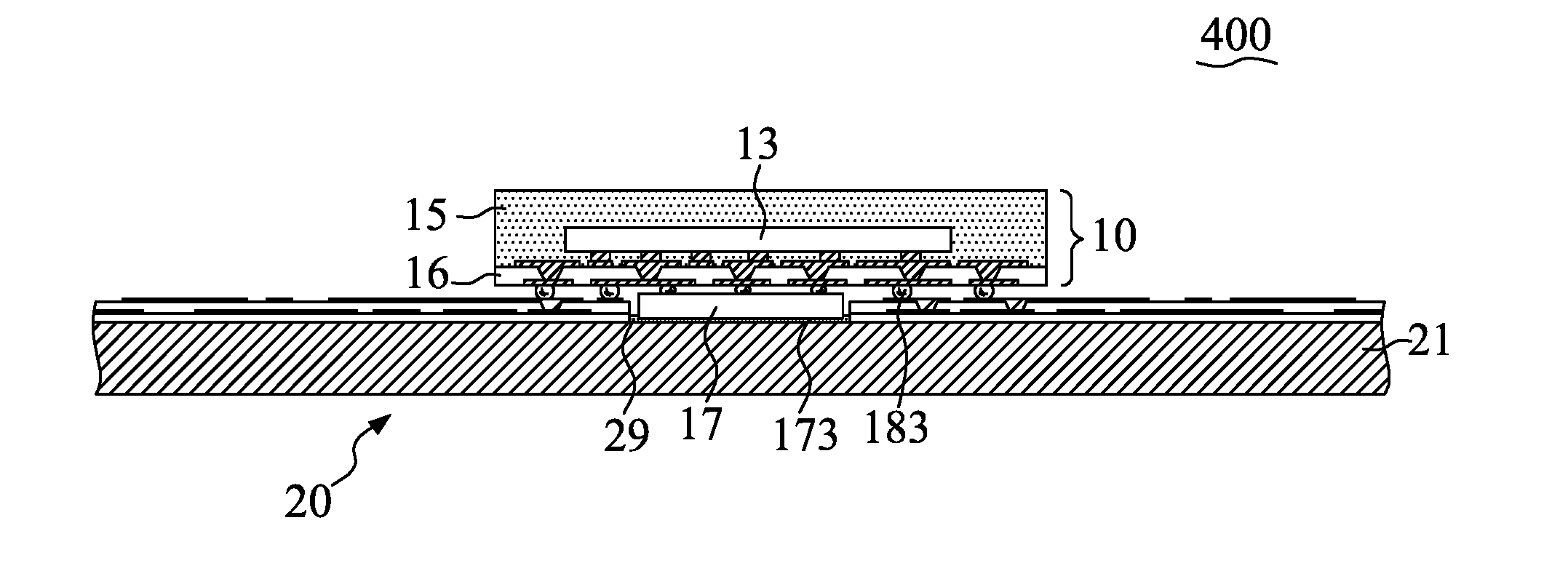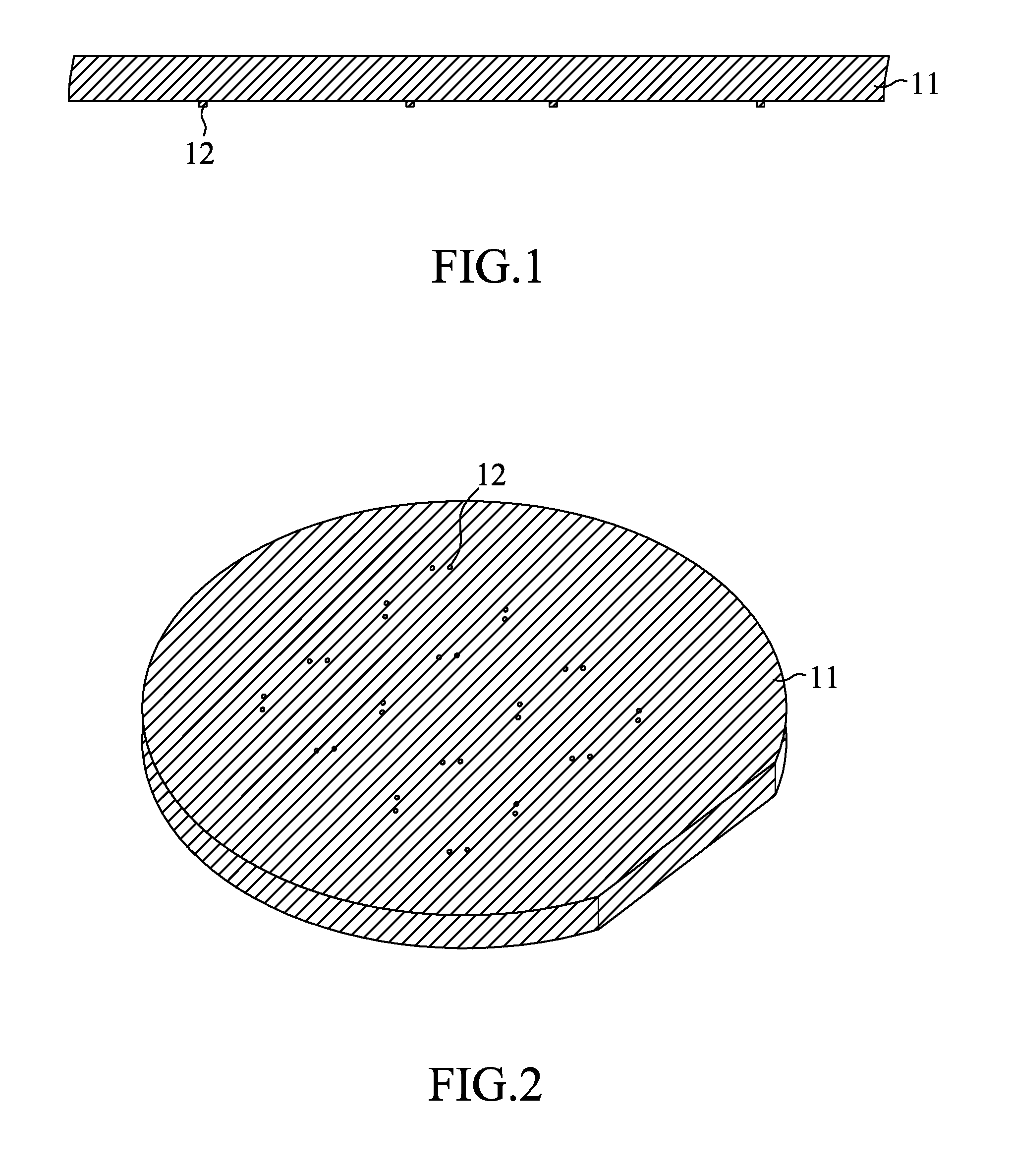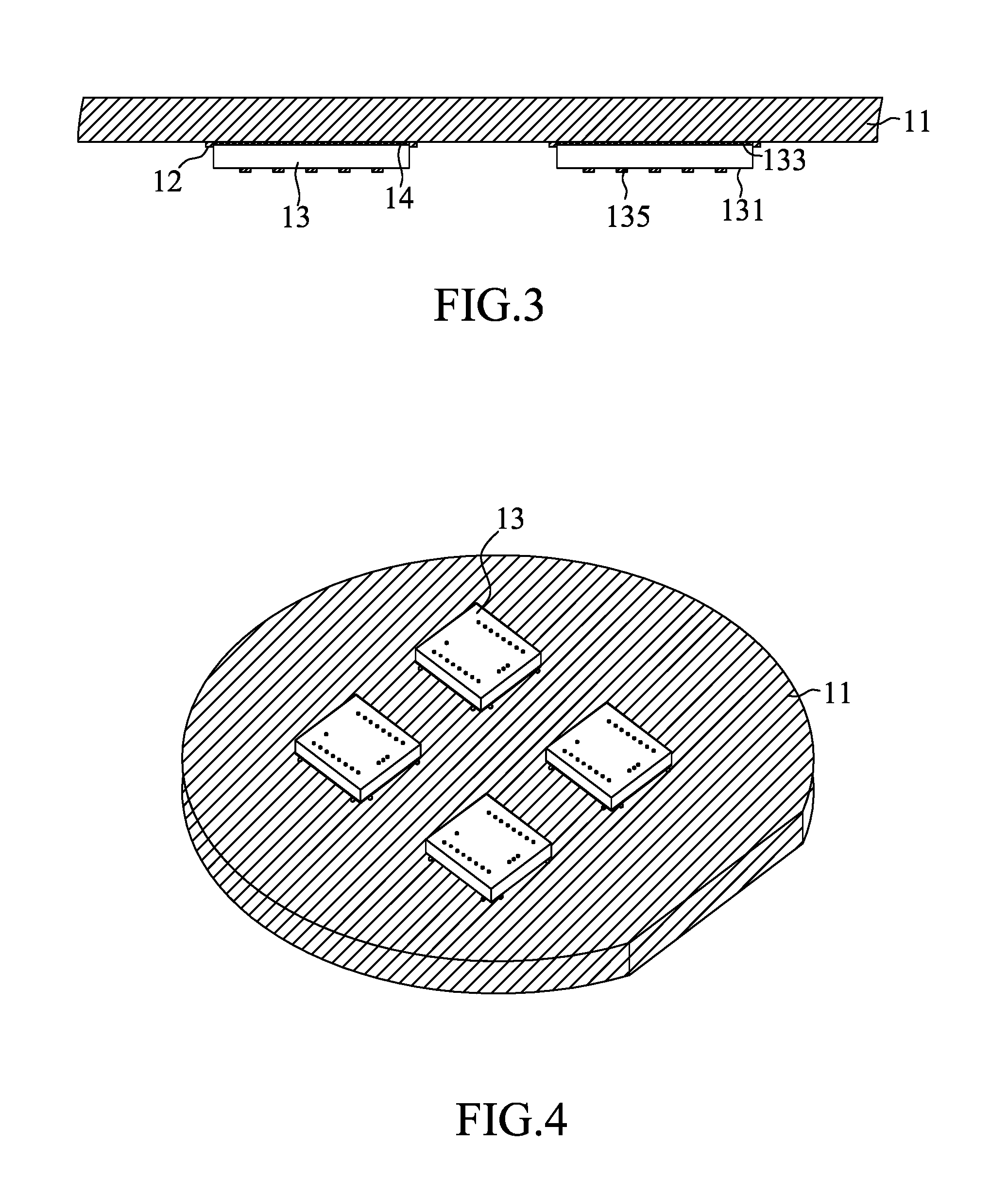Thermally enhanced face-to-face semiconductor assembly with built-in heat spreader and method of making the same
- Summary
- Abstract
- Description
- Claims
- Application Information
AI Technical Summary
Benefits of technology
Problems solved by technology
Method used
Image
Examples
embodiment 1
[0063]FIGS. 1-30 are schematic views showing a method of making a face-to-face semiconductor assembly that includes a stiffener 11, an alignment guide 12, a first semiconductor device 13, a balance layer 15, a first routing circuitry 16, a second semiconductor device 17, a heat spreader 21 and a second routing circuitry 24 in accordance with the first embodiment of the present invention.
[0064]FIGS. 1 and 2 are cross-sectional and bottom perspective views, respectively, of the structure with multiple sets of alignment guides 12 on a stiffener 11. The stiffener 11 typically is made of a thermally conductive material, such as metal, alloy, silicon, ceramic or graphite, but any other thermally non-conductive material, such as mold compound, also may be used. The thickness of the stiffener 11 preferably ranges from 0.1 to 1.0 mm. The alignment guides 12 project from the bottom surface of the stiffener 11 and can have a thickness of 5 to 200 microns. In this embodiment, the stiffener 11 h...
embodiment 2
[0091]FIGS. 31-44 are schematic views showing a method of making another face-to-face semiconductor assembly that includes another aspect of subassembly in accordance with the second embodiment of the present invention.
[0092]For purposes of brevity, any description in Embodiment 1 above is incorporated herein insofar as the same is applicable, and the same description need not be repeated.
[0093]FIG. 31 is a cross-sectional view of the structure with primary conductive traces 161 formed on a sacrificial carrier 19 by metal deposition and metal patterning process. In this illustration, the sacrificial carrier 19 is a single-layer structure. The sacrificial carrier 19 typically is made of copper, aluminum, iron, nickel, tin, stainless steel, silicon, or other metals or alloys, but any other electrically conductive or non-conductive material also may be used. In this embodiment, the sacrificial carrier 19 is made of an iron-based material.
[0094]FIG. 32 is a cross-sectional view of the s...
embodiment 3
[0109]FIGS. 45-52 are schematic views showing a method of making yet another face-to-face semiconductor assembly that includes yet another aspect of subassembly in accordance with the third embodiment of the present invention.
[0110]For purposes of brevity, any description in Embodiments above is incorporated herein insofar as the same is applicable, and the same description need not be repeated.
[0111]FIG. 45 is a cross-sectional view of the structure with a first routing circuitry 16 detachably adhered over a sacrificial carrier 19. In this illustration, the sacrificial carrier 19 is a double-layer structure and includes a support sheet 191 and a barrier layer 192 deposited on the support sheet 191. The first routing circuitry 16 is the same as that illustrated in FIG. 33 and formed on the barrier layer 192. The barrier layer 192 can have a thickness of 0.001 to 0.1 mm and may be a metal layer that is inactive against chemical etching during chemical removal of the support sheet 191...
PUM
 Login to View More
Login to View More Abstract
Description
Claims
Application Information
 Login to View More
Login to View More - R&D
- Intellectual Property
- Life Sciences
- Materials
- Tech Scout
- Unparalleled Data Quality
- Higher Quality Content
- 60% Fewer Hallucinations
Browse by: Latest US Patents, China's latest patents, Technical Efficacy Thesaurus, Application Domain, Technology Topic, Popular Technical Reports.
© 2025 PatSnap. All rights reserved.Legal|Privacy policy|Modern Slavery Act Transparency Statement|Sitemap|About US| Contact US: help@patsnap.com



